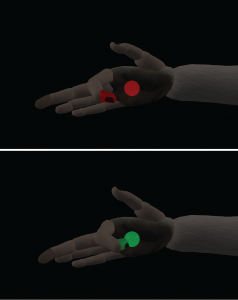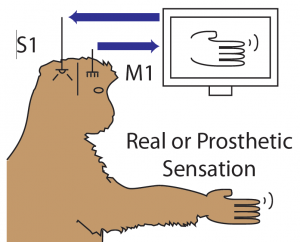Neural Control of Finger Motion
We seek to improve the performance and practicality of hand-level brain machine interfaces, with the eventual goal of restoring natural hand movement in cases of paralysis or amputation. We use neural signals from multielectrode arrays in motor cortex, as well as peripheral nerve signals amplified with reinnervated muscle.
Electrodes and Electronics
We work on a variety of novel circuits and devices for advanced neural interfaces. We have incorporated 8 um carbon thread electrodes into a multi channel array at a 150 um pitch, which will self insert into the brain. These electrodes have been implanted chronically in the motor cortex of rodents and have demonstrated the ability to record unit activity for 4 months. Additionally, histological analysis has shown the fibers to be minimally damaging to the surrounding tissue.
We also develop implantable electronics for interpreting neural activity in a power and time efficient manner.
Systems Neuroscience
We study the integration of information across multiple brain areas (primary motor and sensory cortices, sensory thalamus) with the goal of better understanding sensory processing and its relationship with motor control.
If we can understand how these neural circuits represent and communicate tactile inputs, we may enable the delivery of sensory information directly to the cortex of human patients.
We also study cortical representation of sensory inputs in anesthetized and awake brains in order to better understand consciousness and the nature of conscious experience, with implications for safer anesthesia monitoring.
